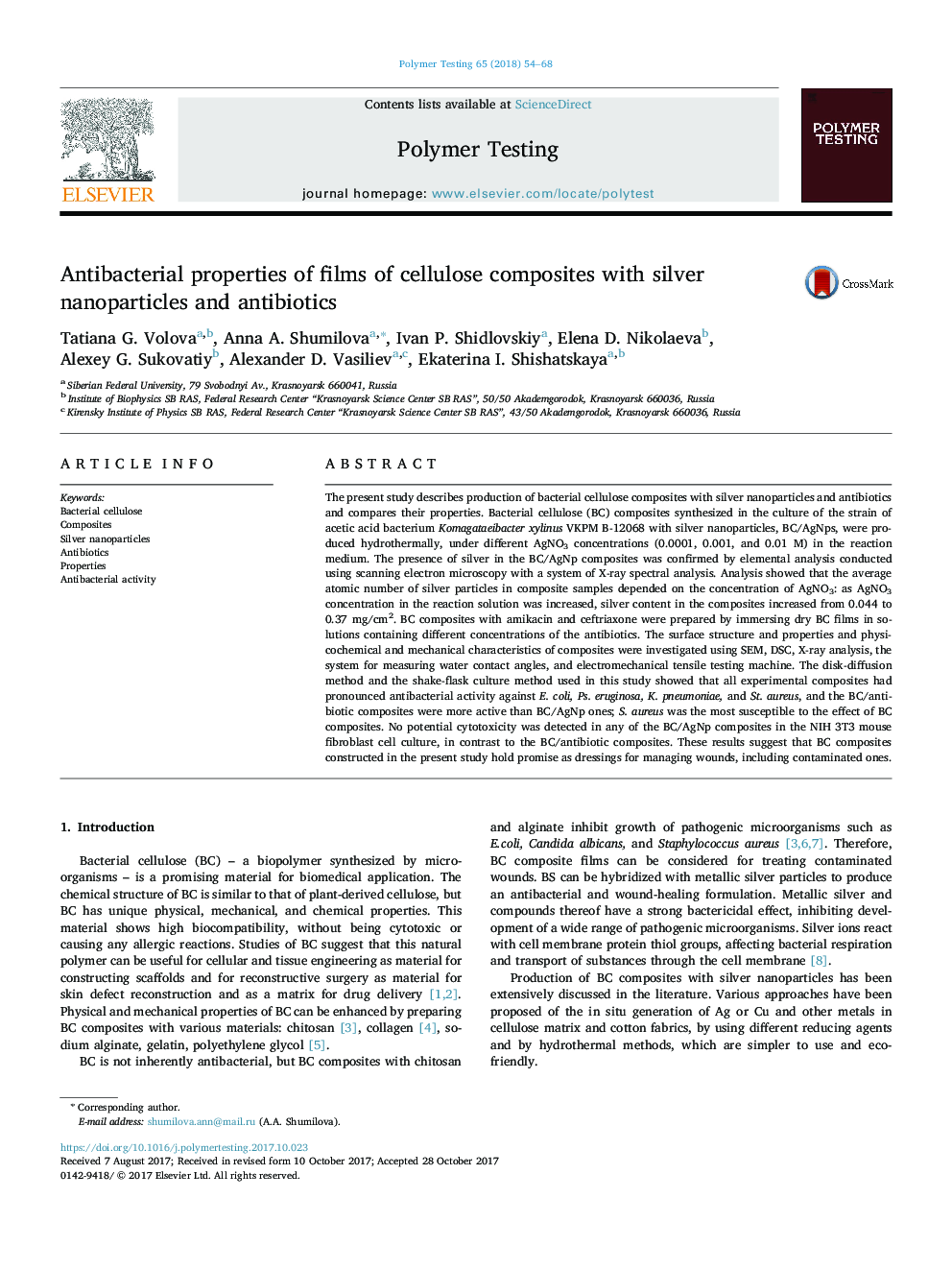| Article ID | Journal | Published Year | Pages | File Type |
|---|---|---|---|---|
| 7825331 | Polymer Testing | 2018 | 15 Pages |
Abstract
The present study describes production of bacterial cellulose composites with silver nanoparticles and antibiotics and compares their properties. Bacterial cellulose (BC) composites synthesized in the culture of the strain of acetic acid bacterium Komagataeibacter xylinus VKPM B-12068 with silver nanoparticles, BC/AgNps, were produced hydrothermally, under different AgNO3 concentrations (0.0001, 0.001, and 0.01Â M) in the reaction medium. The presence of silver in the BC/AgNp composites was confirmed by elemental analysis conducted using scanning electron microscopy with a system of X-ray spectral analysis. Analysis showed that the average atomic number of silver particles in composite samples depended on the concentration of AgNO3: as AgNO3 concentration in the reaction solution was increased, silver content in the composites increased from 0.044 to 0.37Â mg/cm2. BC composites with amikacin and ceftriaxone were prepared by immersing dry BC films in solutions containing different concentrations of the antibiotics. The surface structure and properties and physicochemical and mechanical characteristics of composites were investigated using SEM, DSC, X-ray analysis, the system for measuring water contact angles, and electromechanical tensile testing machine. The disk-diffusion method and the shake-flask culture method used in this study showed that all experimental composites had pronounced antibacterial activity against E. coli, Ps. eruginosa, K. pneumoniae, and St. aureus, and the BC/antibiotic composites were more active than BC/AgNp ones; S. aureus was the most susceptible to the effect of BC composites. No potential cytotoxicity was detected in any of the BC/AgNp composites in the NIH 3T3 mouse fibroblast cell culture, in contrast to the BC/antibiotic composites. These results suggest that BC composites constructed in the present study hold promise as dressings for managing wounds, including contaminated ones.
Keywords
Related Topics
Physical Sciences and Engineering
Chemistry
Organic Chemistry
Authors
Tatiana G. Volova, Anna A. Shumilova, Ivan P. Shidlovskiy, Elena D. Nikolaeva, Alexey G. Sukovatiy, Alexander D. Vasiliev, Ekaterina I. Shishatskaya,
